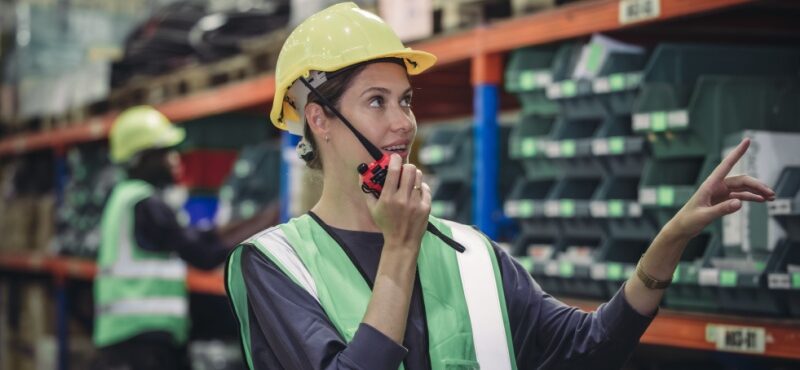Choosing the right two-way radio system can have a major impact on your business’s communication, safety, and efficiency. Whether you operate in construction, hospitality, education, transportation, or public safety, clear and reliable communication among team members is essential to success. However, not all two-way radios are created equal—and selecting the wrong system can lead to dropped signals, poor range, and unnecessary costs.
From frequency type to durability and features, several important factors should guide your decision. Today we outline the key things to consider when choosing a two-way radio system for your business to ensure it meets your operational needs now and into the future.
Coverage Area and Range Needs
Before choosing a system, consider where your team will be using the radios. Will they operate indoors, outdoors, across multiple floors, or in remote areas? UHF (Ultra High Frequency) radios perform better indoors and around obstructions like walls or machinery, making them ideal for schools, hotels, and warehouses. VHF (Very High Frequency) radios are better for outdoor use in open spaces, such as construction sites or farms.
If your business requires wide-area coverage—such as dispatching across a city or between job sites—you may need a digital trunked system or radio network that expands your communication range far beyond line-of-sight.
Analog vs. Digital Radios
Analog radios are cost-effective and easy to use but offer limited features and lower audio quality. Digital radios, on the other hand, provide clearer audio with noise reduction, longer battery life, greater capacity for simultaneous conversations, and enhanced security through encryption. For businesses with high communication demands or growing teams, digital radios offer more scalability and advanced features, making them a smarter long-term investment.
Durability and Environment
Two-way radios are often used in demanding environments. Be sure to choose a model that can withstand the conditions your team faces. For construction or industrial settings, rugged, waterproof, and dust-resistant models with MIL-STD certification are recommended. For lighter-duty use in retail or hospitality, compact and lightweight models may be more appropriate and comfortable for long shifts. Some radios are specifically designed to survive drops, rain, and rough handling—important features when reliability in tough conditions is a priority.
Battery Life and Power Options
Radio performance is only as reliable as its battery. Consider how long your team will need their radios to last without recharging. Many professional two-way radios offer high-capacity batteries that can last eight to fourteen hours or longer. For extended shifts or remote jobs, it’s worth considering radios with replaceable battery packs or charging accessories like multi-unit chargers and vehicle adapters.
Features and Customization
The best radio system for your business will support the way your team communicates. Depending on your needs, look for features such as emergency alert buttons for worker safety, GPS tracking for mobile teams or fleet operations, hands-free (VOX) operation for convenience, text messaging and private calling options for larger teams, and man-down or lone worker alerts for high-risk roles. The more tailored your features are to your workflow, the more your team will benefit from the system.
Licensing and Compliance
Some two-way radios require FCC licensing, especially if they operate on business-band frequencies or transmit at higher power levels. While this may seem complex, licensed radios provide stronger signal performance, less interference from other users, and access to more professional-grade models. Unlicensed radios, like FRS (Family Radio Service), are typically limited in range and features and may not be appropriate for professional use.
Integration and Scalability
Think beyond your current needs. As your business grows, will the radio system scale with it? Choose a solution that can be easily expanded with more devices, integrates with other systems such as surveillance, dispatch, or GPS, and can be programmed or updated remotely for easy configuration. A scalable system ensures your investment continues to serve you as your operations evolve.
Choosing a System Built for Your Business
The right two-way radio system does more than provide communication—it enhances safety, boosts productivity, and keeps your team connected no matter the environment. By considering your coverage needs, durability requirements, desired features, and scalability, you can invest in a system that supports your day-to-day operations and long-term goals.
Highland Wireless specializes in helping businesses choose, configure, and support professional two-way radio systems tailored to their unique needs. Contact Highland Wireless now to speak with a communications expert and discover the right solution for your team.

